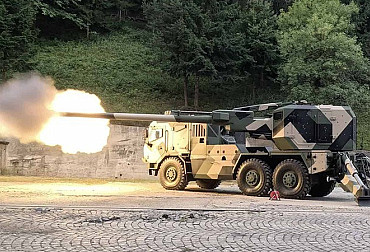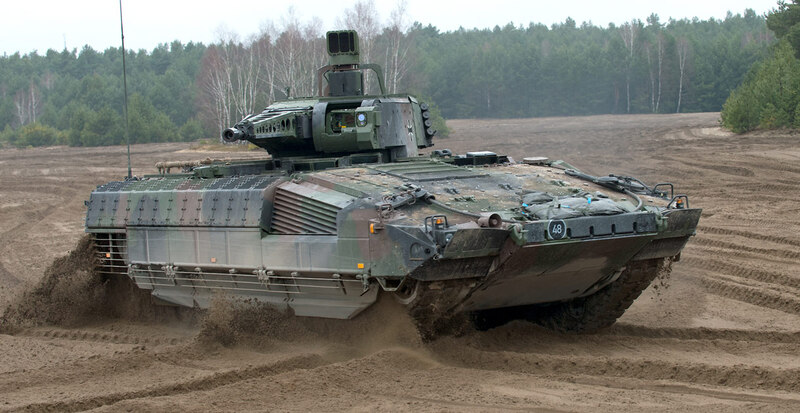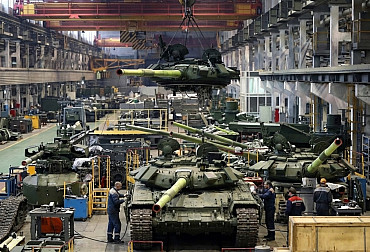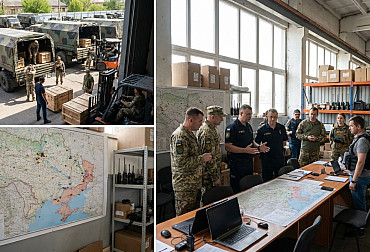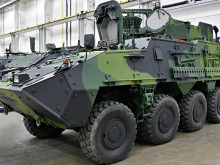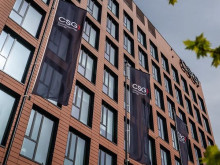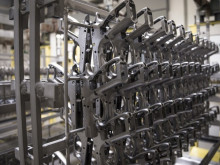The price of the German security turnaround? 100 billion euros
At the end of May, Germany took an important step to implement its rapid "security turnaround" triggered by the Russian invasion of Ukraine. Germany's ruling coalition of SPD, Greens and FDP agreed with the opposition Christian Democrats to create a special financial fund. The fund is to be set up outside the state budget and its main objective will be to increase defence spending over a five-year period. The state will put EUR 100 billion into it.
Germany is thus on track to meet the Alliance commitment to spend two per cent of GDP on defence, which was decided at the Wales summit eight years ago. Today, Germany spends EUR 50 billion on defence; now it should be EUR 70 billion. This is a significant turnaround, because German Governments have long been cutting the Bundeswehr's budget in recent years, for which they have been heavily criticised. However, time has torn the curtain and now Chancellor Olaf Scholz has declared that our 'aim is to create a powerful, highly modern, progressive Bundeswehr that will reliably protect us'.
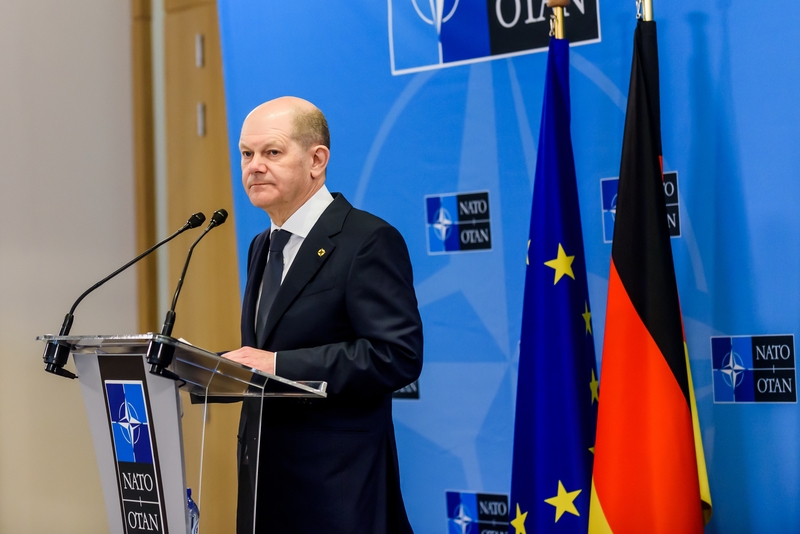 Picture: "Our goal is to create a powerful, highly modern, advanced Bundeswehr that will reliably protect us," Olaf Scholz recently said. | Shutterstock
Picture: "Our goal is to create a powerful, highly modern, advanced Bundeswehr that will reliably protect us," Olaf Scholz recently said. | Shutterstock
But the approval of the fund was not without its problems. The CDU demanded that the two per cent defence spending be included in the constitution and that all the money from the fund go directly to the Army, which did not sit well with the Greens. They demanded that the funds should also be used to strengthen cyber-security. Here we see a certain similarity with the Czech Republic, where the ODS wants to enforce the legal enshrinement of two per cent for defence, and the Ministry of Defence is trying to squeeze 'non-military expenditure' into this framework, i.e. expenditure on cyber security and the hardening of transport infrastructure. In the end, the German debate resulted in a compromise: spending on cybersecurity will come directly from the state budget and the emergency fund will be used only for the purchase of weapons. The constitutional enshrinement of the two percent did not pass.
Acquisition priorities are also clear: Germany wants to buy US F-35 fighter jets to replace the outdated Tornadoes. It is also to move ahead with new Infantry Fighting Vehicles. Deliveries of Puma IFVs have dragged on for a whopping two decades, and now their introduction into the Bundeswehr is due to be completed in eight years, by 2030.
The German security turn related to the war in Ukraine also affects the Czech Republic. Europe's strongest economy may be cautious about supplying its heavy combat equipment to Ukraine, but it does not want to leave it completely in the lurch. That is why, after Prime Minister Petr Fiala's visit to Chancellor Scholz in Berlin in May, the possibility of the Czech Republic supplying Ukraine with unmodernised T-72 tanks and receiving German Leopards in return appeared on the table. Our Army will receive 15 Leopards 2 A4, which are in the arsenal of Austria or Poland, and in addition, the possibility of purchasing up to 50 tanks in the most modern version 2 A7+, which were bought by Hungary or Denmark and which are already used by the Bundeswehr, will be discussed. The price for them is expected to be 15-20 billion crowns. This will accelerate the modernisation of the armoured troops, with the older Leopards being used for training and the new tanks for what is now the main purpose: the defence of the Czech territory.
Crucially, the Czech defence industry will be involved in the production in cooperation with the German company KMW, and thus a large part of the value of the contract will remain in the Czech economy. Czech industry should also be responsible for the repair and maintenance of these tanks. In difficult times of economic crisis, this will be a considerable plus.
Leopard 2
Leopard 2 tanks are the only modern Main Battle Tanks in production in Western Europe today. Over 3,500 of them have been produced so far and are in service in 19 countries. Just to illustrate, for example, the American M1 Abrams tanks serve in 7 countries, the British Challenger 2 tanks and the French Leclerc tanks serve in 2 countries. The development of the various versions of the Leopard 2 tanks has taken place or is taking place in two dimensions - new production and the modernisation line. For example, the Strv 122 (Sweden), Leopardo 2 (Spain), Leopard 2 A7+ (Qatar) or Leopard 2 A7HU (Hungary) tanks are considered as new production. The future Leopard 2 A7+ tanks for the Czech Army should be included among the new production. Within the modernisation line, the Leopard 2 A5, Leopard 2 A6M, Leopard 2 A7 and Leopard 2 A7V tanks for the German Army, or the KPz 87 WE (Switzerland), Leopard 2 A4M (Canada) or Leopard 2 A5 DK (Denmark). Currently, the German Army is using Leopard 2 tanks from A5 and later. Interestingly, although the original development of the Leopard 1 and 2 tanks was funded by the German Government, the development of the Leopard 2 A7 version was already funded by KMW.
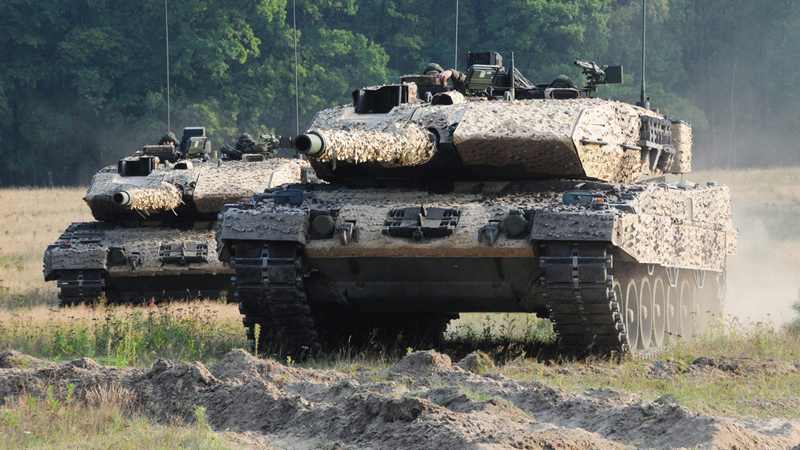 Picture: Leopard 2 tanks are the only modern Main Battle Tanks in production in Western Europe today. More than 3,500 of them have been produced to date and are in service in 19 countries around the world. | KMW
Picture: Leopard 2 tanks are the only modern Main Battle Tanks in production in Western Europe today. More than 3,500 of them have been produced to date and are in service in 19 countries around the world. | KMW
Leopard 2 in its latest A7+ version has a new 120 millimetre L55A1 cannon, modular reinforced armour, improved handling, better fire control, upgraded electronic systems and improved optoelectronics. Another safety feature worth mentioning is the blow panel mounted on the roof of the tank at the rear of the turret, where the ammunition storage is located, separated from the crew compartment by a sliding armoured bulkhead. A protective plate placed above the ammunition box then allows the ammunition explosion to be directed upwards in the event of an explosion, thus limiting the blast pressure on the bulkhead between the ammunition box and the crew compartment. Thanks to this plate, the tank crew is thus better protected from the consequences of the explosion, when there is no risk of tearing off the entire tank turret, as we can often see recently with Russian tanks fighting in Ukraine.













